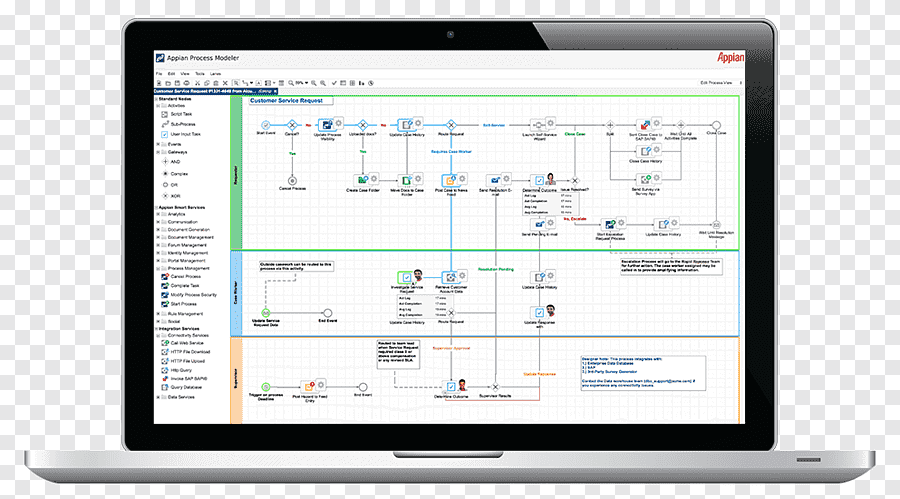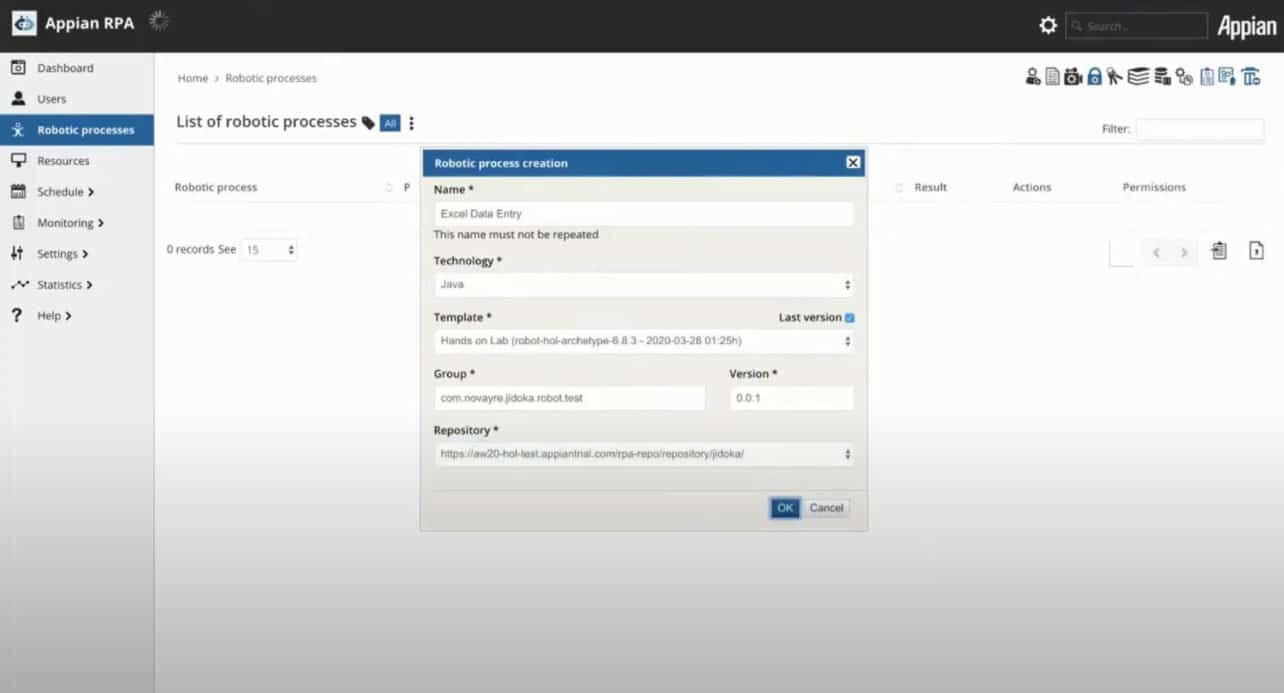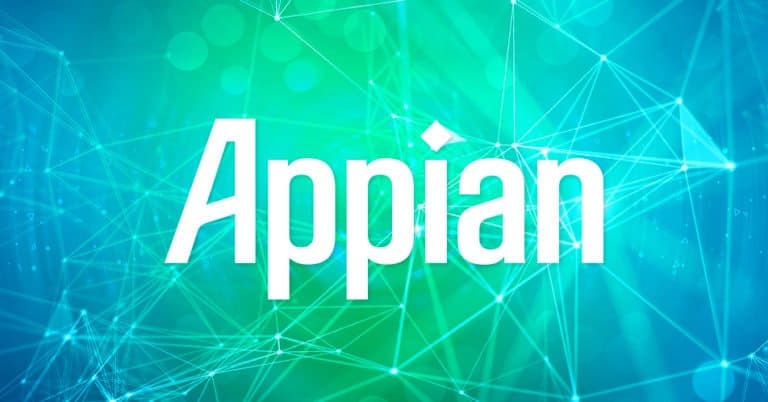Appian wants to become the absolute leader in workflow automation using low-code, and if possible no-code. No matter what kind of business processes, Appian will automate them. At least that’s the vision the company wants to spread. We spoke to Michael Beckley, Appian’s CTO.
It’s been over a year since we were guests at Appian World. This year there was a virtual Appian World that we couldn’t attend fully. That’s why we thought its a good idea to dive into the company’s developments over the last year and talk to the CTO about the steps they have taken. Last year’s article; Appian wants to convert BPM to low-code gives a good insight into what the company is doing, but we do want to keep up.
Different way of lowcode, simplifying workflow automation
When our Dutch editorial team writes about low-code, 9 out of 10 times it’s about an easier way of application development and companies like OutSystems and Mendix are mentioned. That is not strange since they are founded in the Netherlands and they are low-code specialists as well. However, they mainly focus on building complete applications. Appian does not aim to develop individual applications. Appian is more focused on automating workflows, or reading and processing data from one system to another. Ultimately, Appian comes from the business process management corner, that’s where the roots lie and they are still in the company.
Tip: IT struggles with corona: more innovation with less resources
Automate even more workflows
Last year Appian already had a quite strong portfolio in automating workflows. The company has several solutions to process data and to connect systems. For example, it has developed an AI and machine learning toolkit that goes far beyond standard OCR applications. It can extract valuable data from a document and then process it in a system. With OCR, you still see far too often that if the layout of a document changes, valuable data cannot be detected anymore and the whole process comes to a halt. By applying AI and ML to this process, it works much better, the layout changes will be detected automatically, and the process will continue to operate smoothly.

Appian still consists of a lot of small building blocks that all have their own task, from reading data from one object to processing and filtering data in another block, and then adding data to another object. These objects can be applications, documents, databases, but also just APIs of applications.
The powerful thing about Appian is that sometimes there can also be manual steps in a workflow. For example, if data needs to be verified manually, or if a customer needs to fill in additional information, or data needs to come from other systems but is not yet available. As soon as the data is complete, a workflow continues. This intelligent way of business process management makes Appian so powerful.
Appian now also has RPA
Besides the many ways Appian can already gather data, it decided that just wasn’t enough. Appian has now also added Robotic Process Automation (RPA) to its portfolio, which makes it possible to automate everyday manual tasks using a robot. Suppose an employee has to collect specific datasets for his account manager every day. Think of simple customer data, combined with order history that is stored in Salesforce, with payment history in SAP Ariba and all discounts and promotions listed in the webshop. Usually, an employee needs to gather all those separate data parts and combine them to an aggregated overview in a report so that the account manager has all the data at his disposal when he visits the customer.

It’s a lot of work to create these reports since you have to access multiple systems and combine the data. Especially when the number of clients grows. It is also easy to automate with RPA. By training a robot where to find valuable data and information, it is possible to automate this process with the push of a button. The robot will do all the steps you would normally do manually but in a fraction of the time. The data can automatically be sent through a workflow, which will combine the data and create the reported for the account manager.
RPA technology has become more popular over the past few years, so RPA is not new to Appian. The company has been working with the well-known RPA suppliers such as UiPath, Automation Anywhere and Blue Prism for years. Appian will also continue to do so because, in the end, the customer chooses his favourite RPA tool. After the acquisition of Novayre, Appian now also has its own RPA solution. This RPA solution from Appian is a Saas solution that can apply RPA to Windows and Linux clients with agents. Appian RPA also works well with web-based applications.
Tip: Robotic Process Automation (RPA) is booming, what can you do with it?
Building applications that integrate into the business
Although you can build separate applications on the Appian platform, in our opinion the platform is more suitable to build applications that integrate within your workflows or that integrate with certain system or records solutions. Think of ERP, HCM and CRM from companies like Oracle, SAP and Salesforce. Appian converts the Appian applications you build using low code into real applications with the React platform. React can be used to create web, mobile and desktop applications.
One of the criticisms we heard a lot during AppianWorld last year was that Appian had too little eye for design. The applications you could build were mostly straightforward, consisting of tables, forms and graphs. Fine for a business enterprise application, but not for a company’s customer portal. That’s where a user-friendly application with a consumer design that splashes off the screen is desired. At the time, Appian clearly could not go along with that. It did take that criticism to heart because a lot of new layouts and elements have been added so that customers can now build more design-oriented applications as well.
Appian wants to become more scalable through Kubernetes
Appian now stands out on several fronts:
- Managing and automating business processes;
- The automatic processing of complex documents by extracting valuable data from them;
- Building RPA robots that automate human actions;
- Developing applications that connect to existing systems and provide a better experience for the employee or customer.
In large companies, these processes may be applied on a large scale. To ensure that all these processes are also scalable and capacity can be increased quickly, Appian has been working on Kubernetes for some time now.
Tip: What is Google Anthos? Is this the modern cloud infrastructure you’re looking for?
The Appian platform already consists entirely of containers, but the intention is to make the advantages of container orchestration available to customers. In this way, certain processes packaged in a container can soon be scaled up individually to create more capacity. Beckley says this is a very challenging project, the first customers are now testing these features, but it will certainly take a bit more time.
Beckley indicates that every component and process of the Appian platform needs to be made suitable for containers. In the end, Appian doesn’t want to tell the customer: “here you have a container, have fun with it”. It wants to help the customer make the best use of containers. Upgrading containers, monitoring containers so that the platform as a whole continues to function, backing up, scaling, logging, these are all things that need to be well prepared and supervised. Kubernetes is a complex orchestration platform. Beckley says that customers need to get the right guidance to get the most benefits out of using containers. In the end, working with Kubernetes and containers is not that easy.
It is not yet clear when Appian will be completely ready for Kubernetes and when it will become widely available. However, it is a good subject to talk about in the future. Appian already offered the possibility to run Appian from the Appian Cloud or in its own data center. Soon it will be able to run from any Kubernetes cluster.
In conclusion, Beckley says that Appian has continued its strategy over the past year and has continued on the path it was heading. He sees some good steps taken forward with RPA, AI and machine learning and better application design capabilities. Kubernetes is still under development. Maybe the best is yet to come. We will follow keep following Appian in the future.
